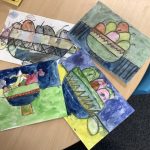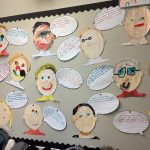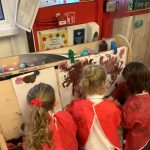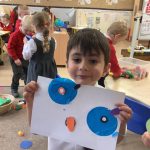Rationale
At Millbrook Primary School, we believe that Art contribute to the development of the whole child emotionally, aesthetically, physically, socially and cognitively. It provides all children with the opportunity to express themselves imaginatively, creatively and therefore developing their understanding of, and response to, the world around them.
Through our art opportunities in school, we aim to address the challenge and creativity aspects of our school by providing opportunities for children to explore their ideas and record their experiences through a variety of techniques using a variety of media too.
“Art, craft and design embody some of the highest forms of human creativity. A high-quality art and design education should engage, inspire and challenge pupils, equipping them with the knowledge and skills to experiment, invent and create their own works of art, craft and design. As pupils progress, they should be able to think critically and develop a more rigorous understanding of art and design. They should also know how art and design both reflect and shape our history, and contribute to the culture, creativity and wealth of our nation.” (National Curriculum, 2014).
Aims
The national curriculum for art and design aims to ensure that all pupils:
- Produce creative work, exploring their ideas and recording their experiences
- Become proficient in drawing, painting, sculpture and other art, craft and design techniques
- Evaluate and analyse creative works using the language of art, craft and design
- Know about great artists, craft makers and designers, and understand the historical and cultural development of their art forms.
Teaching and learning style
At Millbrook Primary School, we value the power of the art and design curriculum in engaging our learners with an enjoyable learning experience. Art, craft and design will be taught through a thematic approach, with specific learning goals related to the targets within art and design. In KS1/KS2 children will use sketch books to explore different mediums and techniques, improving their mastery of these skills as they progress through the Key Stage. Direct connections will be made to professional artists’ work (historic and contemporary), using the inspiration to guide their own creativity. Where possible, global links and connections with professional artists will be used to inspire the children, acting as a stimulus material for a unit of art work. Each theme should culminate in a final piece, where the children can apply the skills they have developed during the experimental stages as evidenced through their sketch books.
Purpose of study
In EYFS, children will be developing their cutting, threading, joining and folding skills through fun creative projects. Exploring mark making with the use of crayons, natural items and tools while introducing art vocabulary to the children. The children will explore colours and create their own art from their experiences and knowledge.
KS1
In Pine, children explore primary colours and learn to make secondary colours through colour mixing activities. Children also look at observational drawing skills and use a range of tools to experiment with texture and pattern. The children will make three dimensional shapes and structures using paper and clay.
In Cedar they will be looking impressionism, abstract art and sculpture. Using paint, print , textile, collage and sculpture.
In Willow and Cherry will be looking at Landscapes and explosion of colour and how colours can create different emotions. Using paint, collage and drawings.
Across KS2, there is a broad range of activities that give the children opportunity to explore the outlined core curriculum areas in depth. The following are just some examples of the type of activities children will enjoy.
In Year 3 Maple they will be looking impressionism, abstract art and sculpture. Using paint, print and sculpture.
In Year 4 Holly they will be looking at impressionism, abstract art and symbolism. Using paint, collage, drawing and sculpture.
In Hazel they will be looking at Myths and legends, Sculpture and Cityscapes. Using collage, drawing, sculpture, digital media.
In Chestnut they will be looking at impressionism, sculpture and Architecture. Using paint, drawing, sculpture, digital media and collage.
In Sycamore they will be looking at Impressionism, Architecture and Art and Fashion. Using paint, drawing, collage, textiles, digital media.
Curriculum
- Art Curriculum Knowledge and Skills Progression Map 2024 2025
- Art Curriculum Map 23/24
- Art and Design Milestone 1 Record Sheet 2024
- Art and Design Milestone 2 Record Sheet 2024
- Art and Design Milestone 3 Record Sheet 2024








